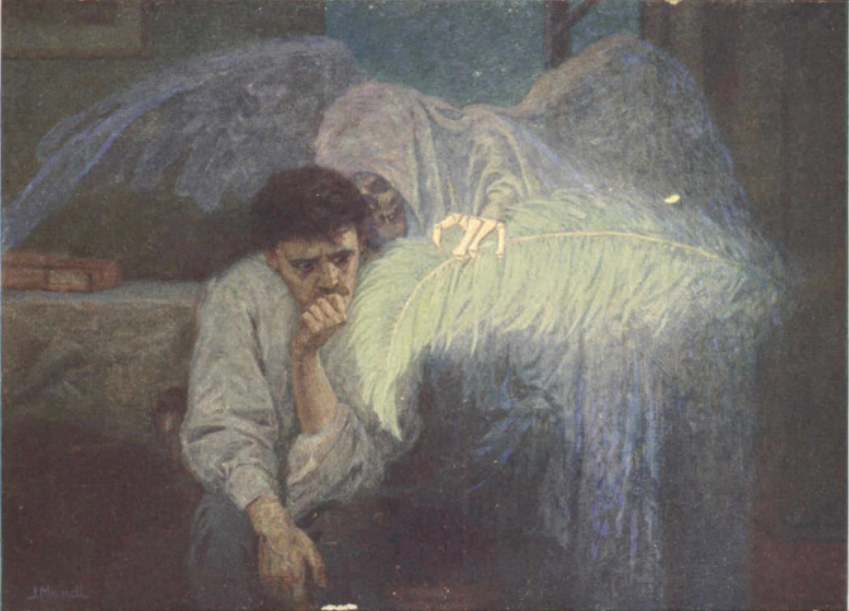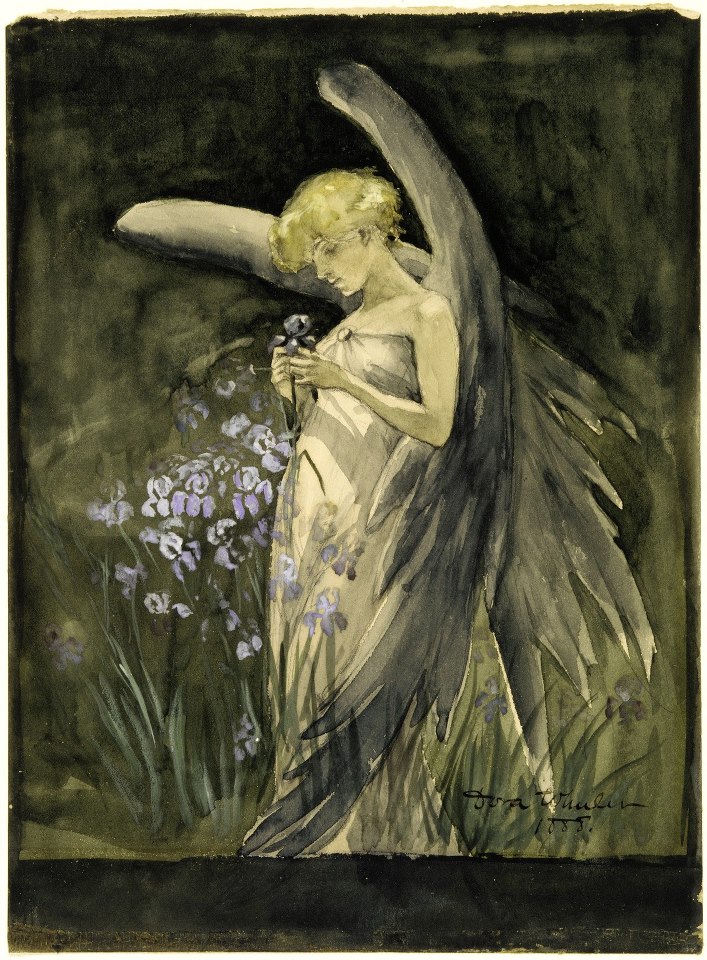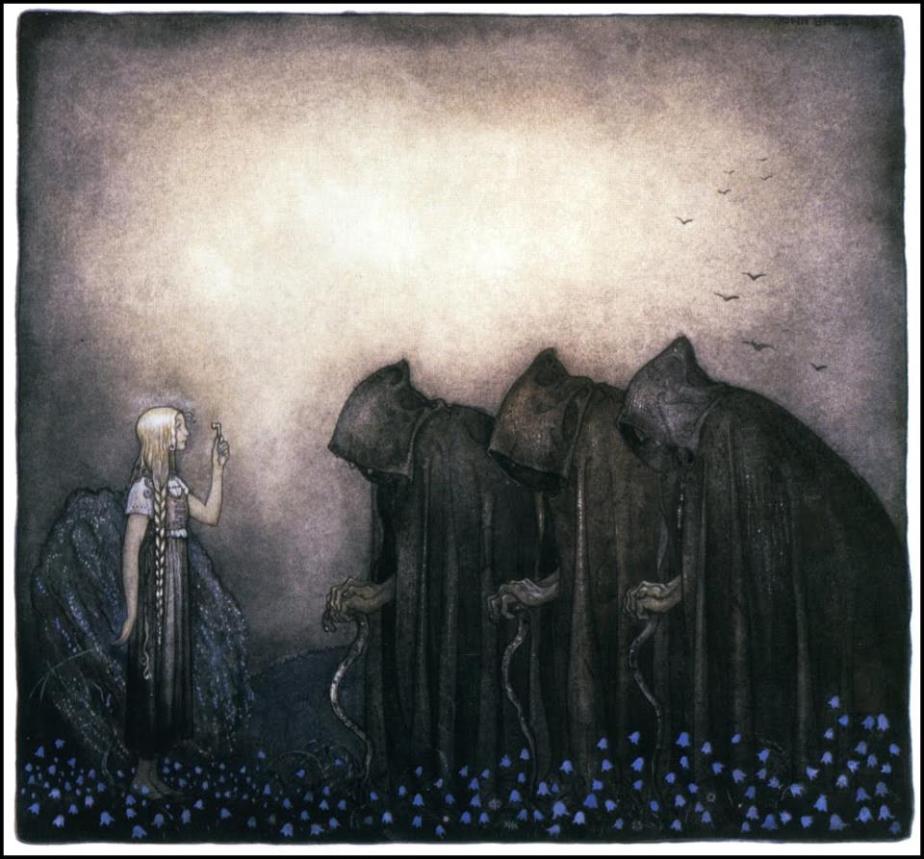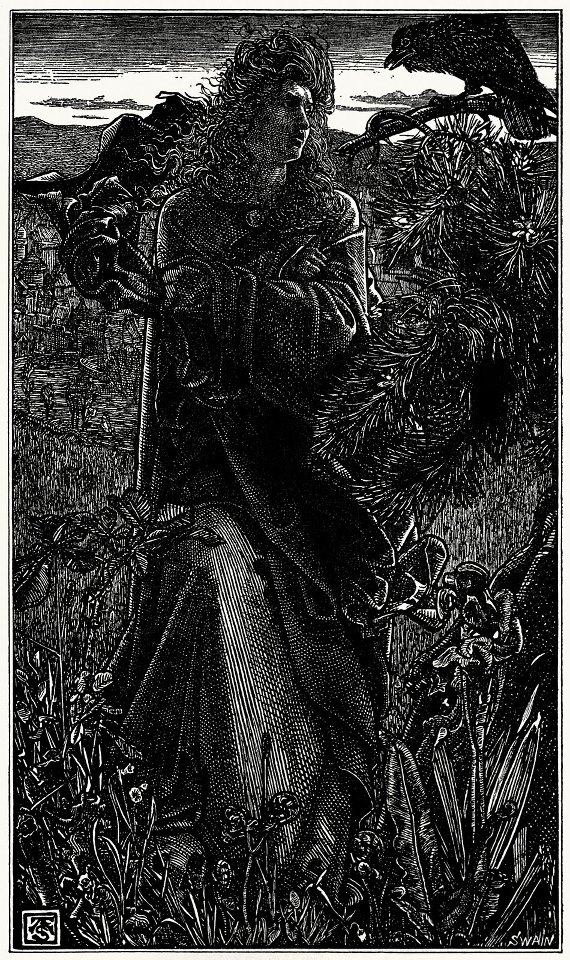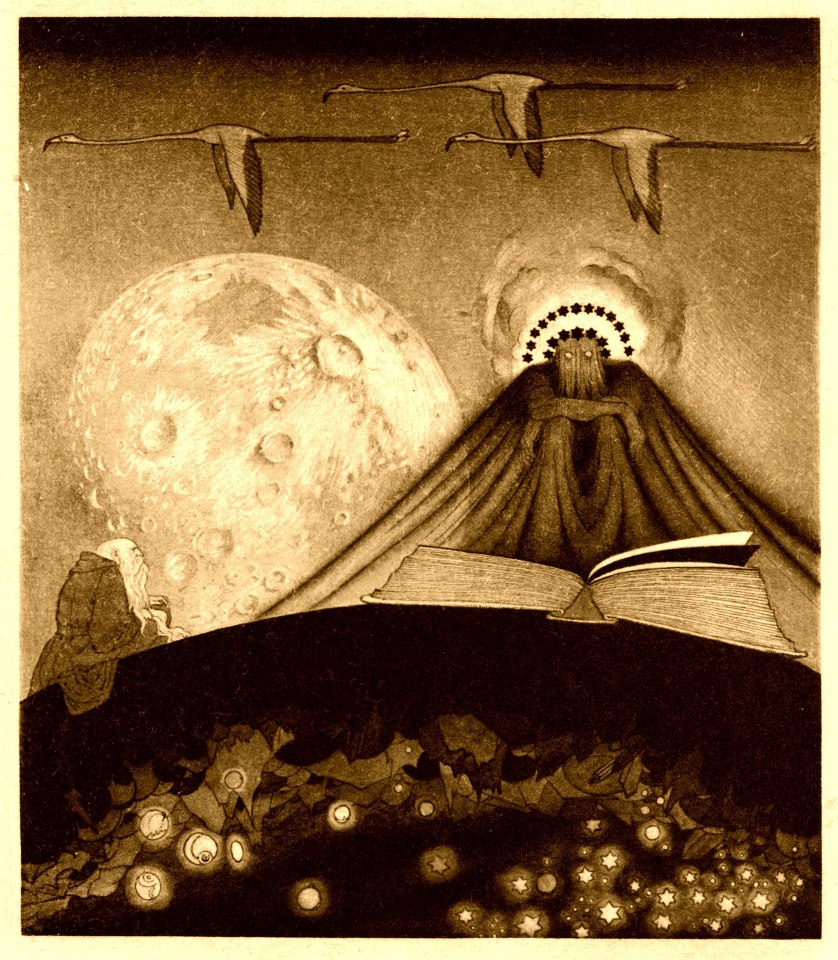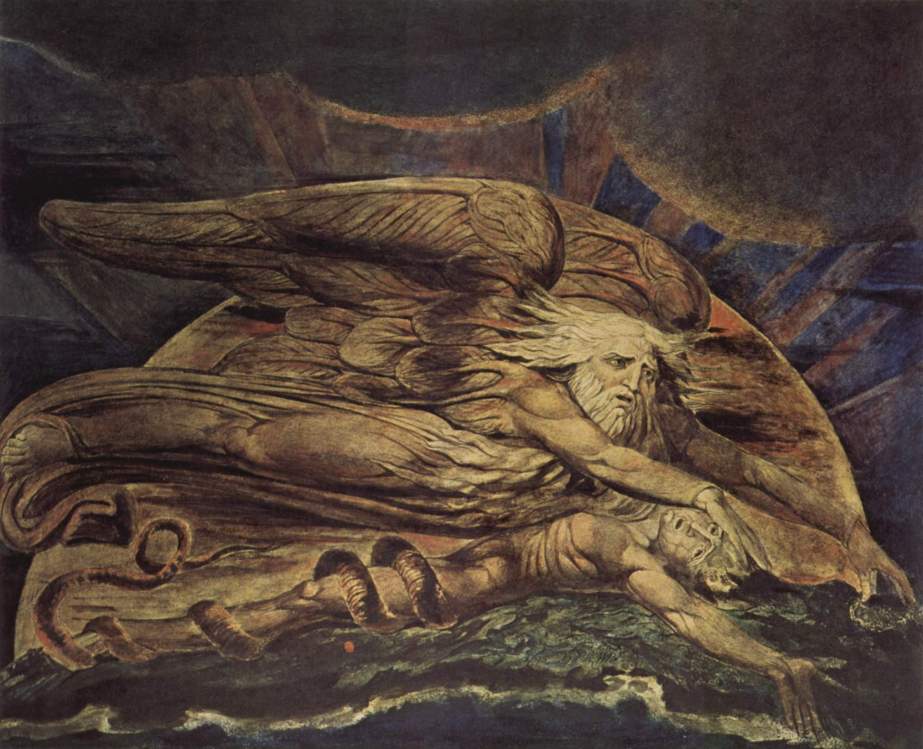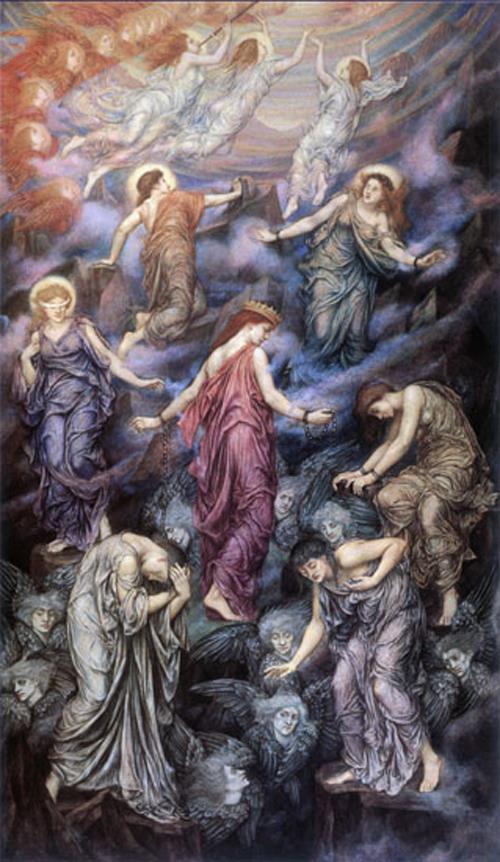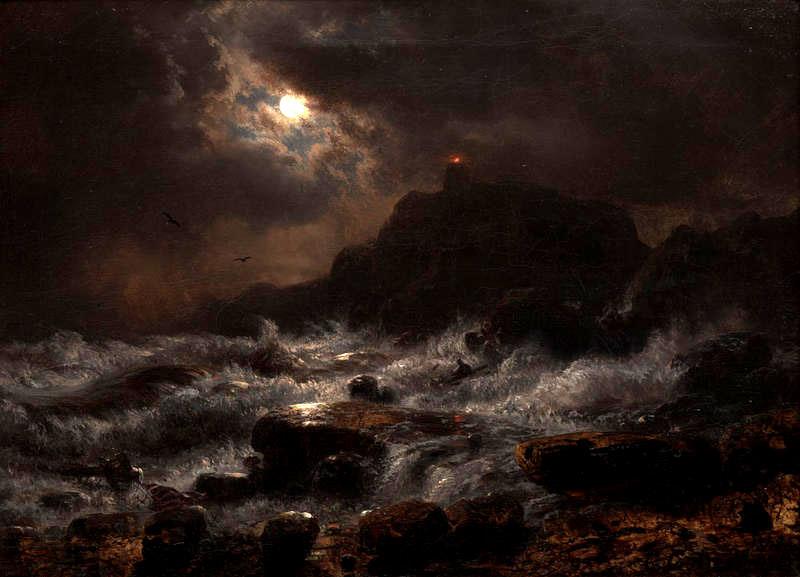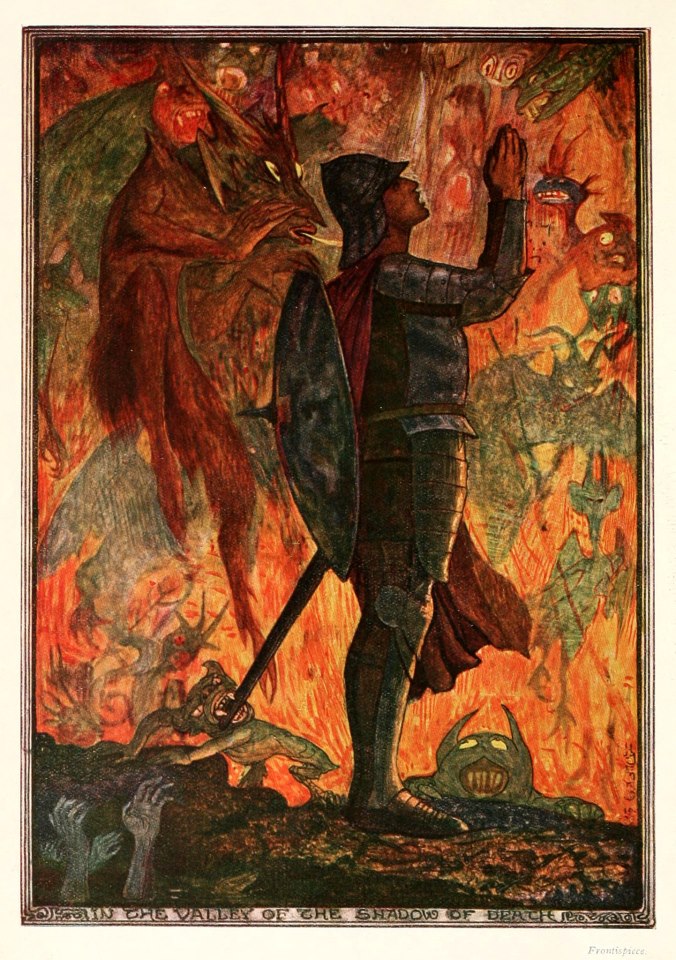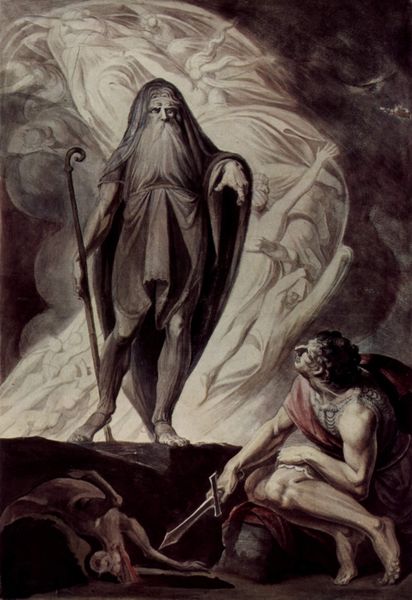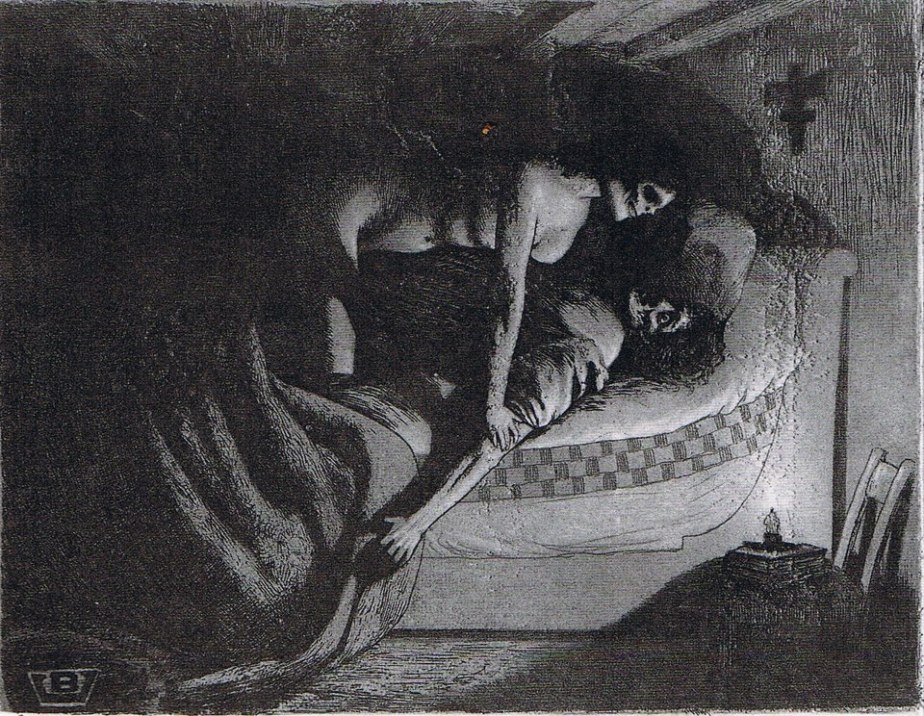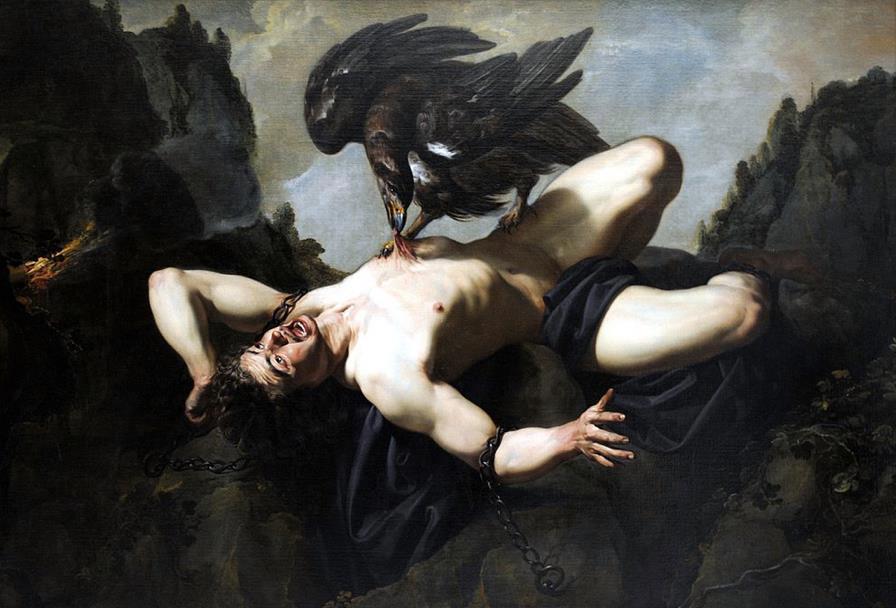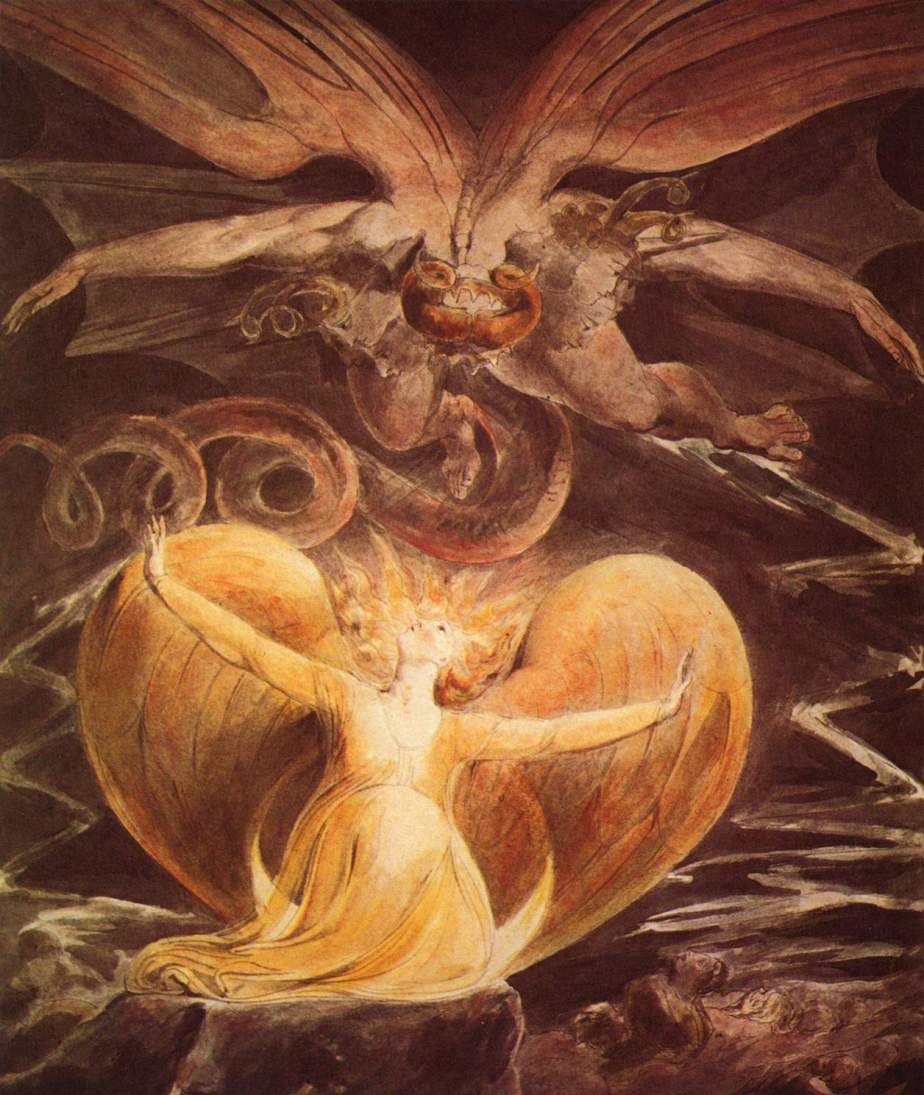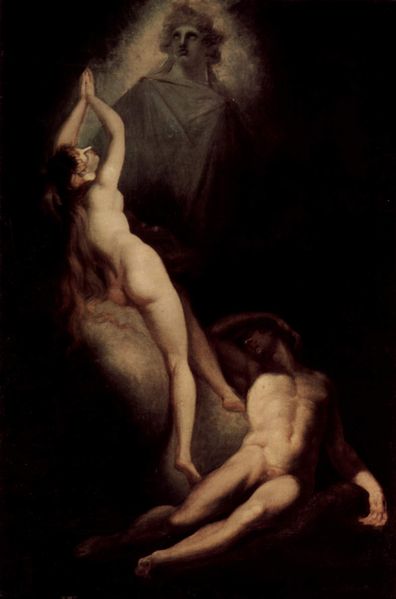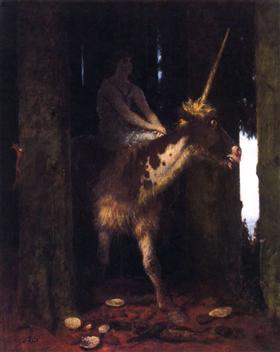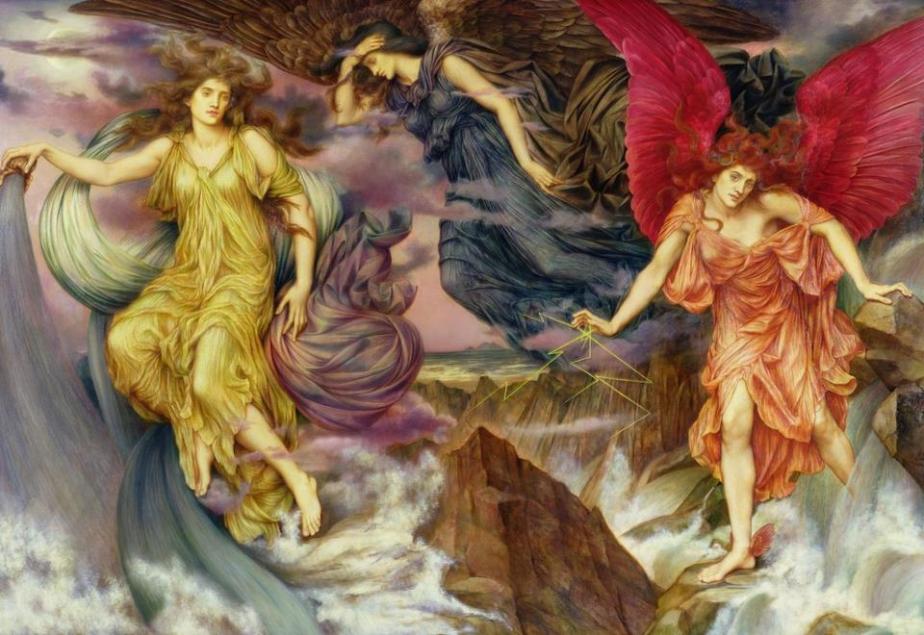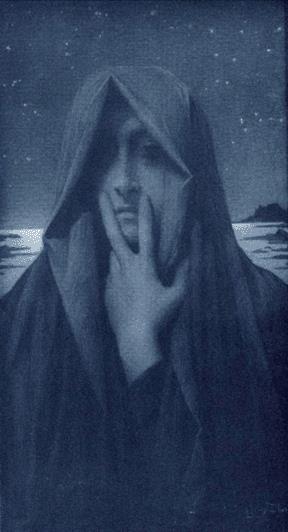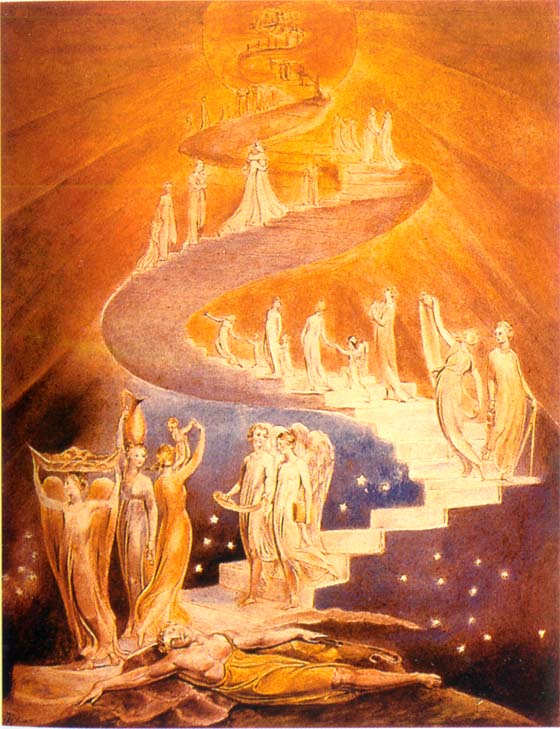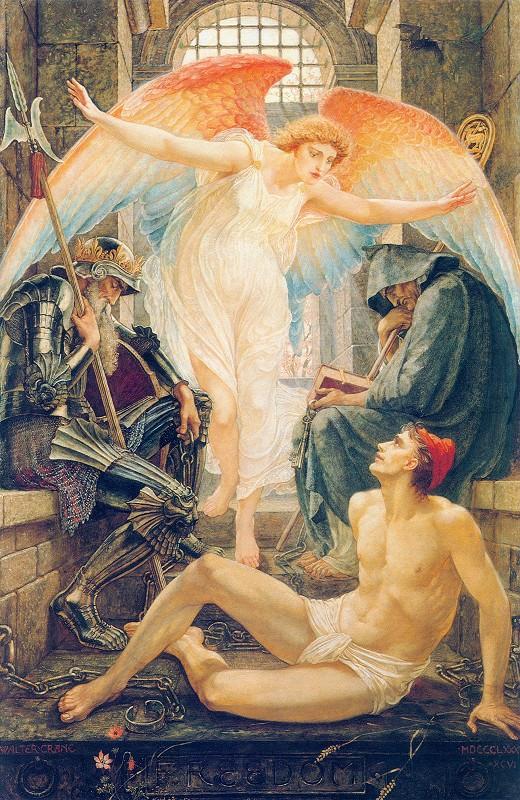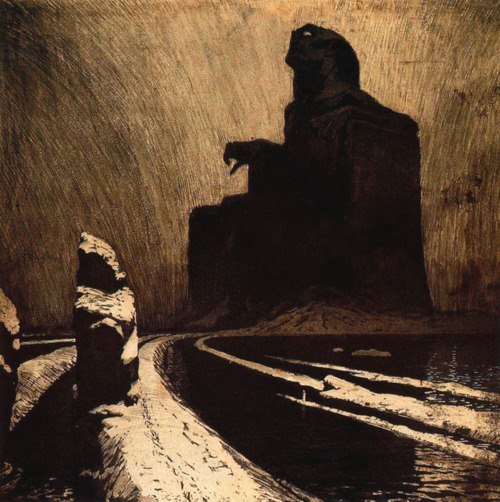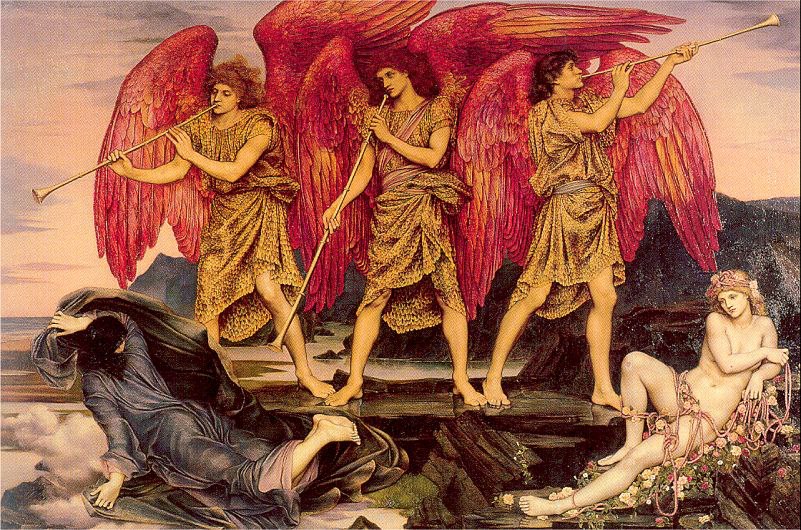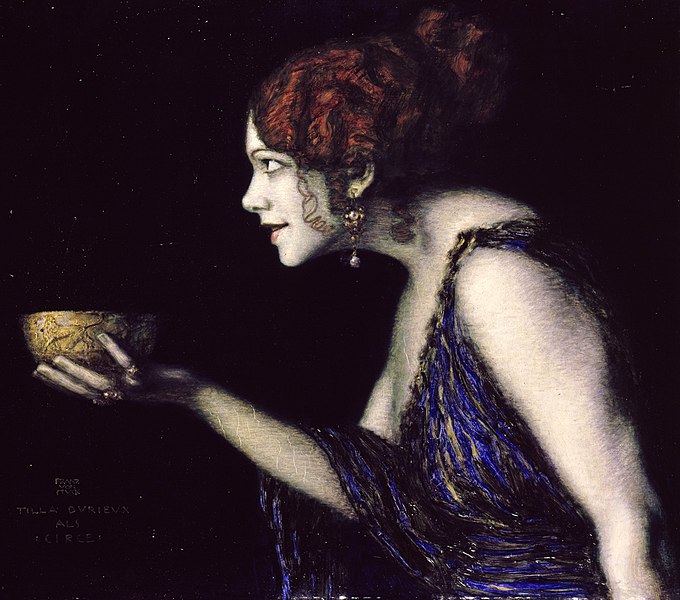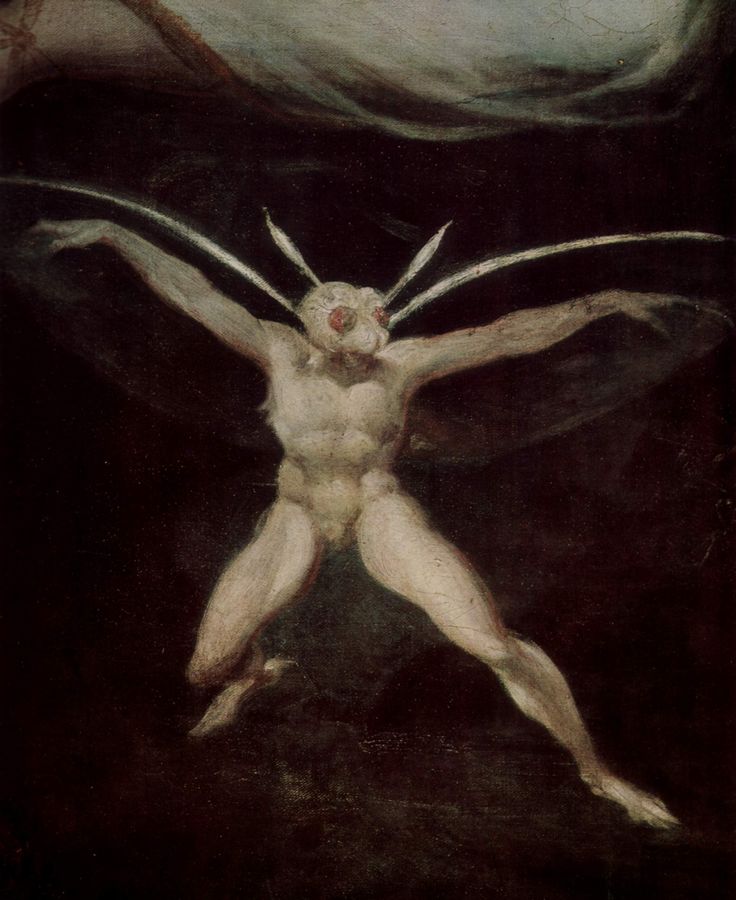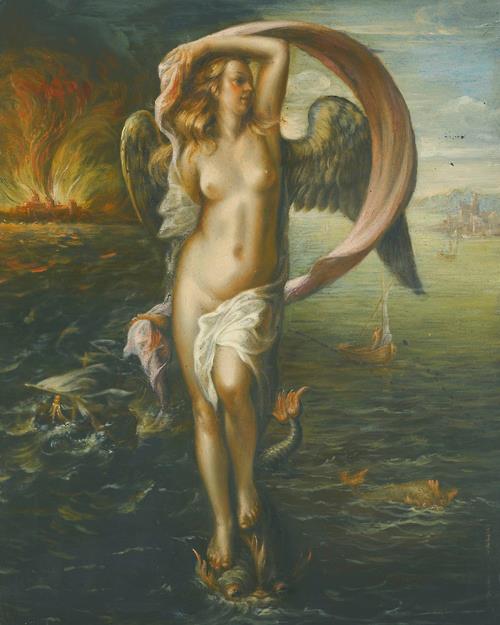
Form is the Illusion is a book about Relationship Theory, an unusual system of metaphysics developed by the late David Douglas Thompson. Relationship Theory addresses questions of ontology and epistemology in a way that is likely to be of interest to pagans and occultists.
Form is the Illusion: A Magical Philosophy (5)
My father often discussed his Relationship Theory at great length, but never fully explained the underlying concepts. Even the most basic ideas of the theory, such as “ringing the changes,” were never clarified and had to be interpreted based on context. (As far as I can discover, he never told anyone that he had borrowed this phrase from the bell-ringing tradition even though that fact is essential to understanding the metaphor he was using.)
The only written explanation he ever left of his theory was a set of somewhat whimsical aphorisms he called the “ten laws” and several pages of obscure notes. The Ten Laws on their own are mere assertions with no supporting arguments, but they make a lot more sense when compared with his notes. The Ten Laws are as follows:
1- Interactions are the reality; form is the illusion.
2- The simpler the concept, the more complex its ramifications.
3- The seeds of the solution are buried in the question.
4- Always ring the changes.
5- Never ignore serendipity.
6- Ignore all laws at least once a week on general principles.
7- Negative feedback is a positive idea.
8- Dynamic tension is required for control.
9- All forces are infinite.
10- The strongest chains have the subtlest links.
(In one version of this list, there was an eleventh law- perception is the ultimate base unit of reality. Note that perception does not mean opinion. This is a re-statement of the idea that interactions between information-units are the only reality. In Relationship Theory, anything you interact with is real by definition, so perception is effectively the base unit of reality.)
He believed that these ideas could be used to work your way through virtually any problem in life, from a broken car to a thorny philosophical question. Reality, in his view, was not an absolute thing but a constantly shifting network of relationships and perspectives in an infinitely complex pattern of interactions. The key to understanding this chaos was not to seek a better perspective on it – as he always used to say, “there is no superior rock on which to stand” – but to learn how to shift fluidly and effortlessly from one perspective to another, “ringing the changes” to get a gestaltic impression of the situation – or of the entire universe. The ten laws were his guidelines on how to do so.
Interactions are the reality; form is the illusion.
As we have already discussed, Relationship Theory defines reality as a set of relationships between information units, and does not distinguish between different forms of information – for instance, by trying to prove whether a haunted house “really” has a ghost in it or not. If your relationship with the house is haunted, that is the only relevant point. Thus, the perception that a particular grove or cave or spring is numinous would be enough reason to establish a relationship with the numen of that place.
The simpler the concept, the more complex its ramifications.
In his conversations about Relationship Theory, my father often talked about modeling the relationships between concepts or worldviews as mathematical interactions between infinite number sets. Why? Because any single thing in the universe implies the whole universe.
If you could see all the implications and connections, you could know everything there is to know about anything by examining a single pebble. You could do the same thing by examining a single idea.
The simplest and most profound descriptions of the universe are so simple and profound precisely because they succeed in implying the entire universe. Given nothing but such a statement, you would have a tool for understanding anything you could ever run into.
“In the beginning, God created the heavens and the earth” is a simple concept with infinitely complex ramifications. “The tao that can be spoken of is not the Tao” is a simple concept with infinitely complex ramifications. So is any other attempt to say something definitive about the world, its meaning if it has one, and our place in it.
Relationship Theory says that you can do this effectively no matter what the statement is. You can formulate a complete description of your reality – an infinite set of units of information – by teasing out all the implications of a single “zed” or relationship.
Every thing implies everything.
If this is true, it isn’t even necessary to start with anything particularly profound. You could understand all of reality by completely understanding how a car works or what a single line in a poem means or how ice cream tastes. Of course, we don’t actually have the ability to see all the implications of any single thing, so we don’t succeed in completely understanding the universe.
However, we can take any zed we want to as a starting point to examine our reality or some particular question we have about it. In Relationship Theory, this sort of starting point is called a “zed naught”. Beginning with whatever zed naught we want to play with, we look at it from every angle we can possibly think of, even when the different angles directly contradict each other. We play with its implications and relationships to get a bigger and broader picture of whatever it is we want to examine. We ring the changes on all these different perspectives and let zed naught expand into the infinite.
The seeds of the solution are buried in the question.
Interactions have patterns, and patterns can be predicted, assuming that you have enough of a sample to see what the pattern is. Any question that clearly describes a problem should contain the same relationships within it as the problem itself. Therefore, the problem can be solved by deeply examining the question, as in Tarot and other sophisticated forms of divination.
Always ring the changes.
In practical terms, Relationship Theory works by asking a question and then examining the implications of the question by looking at it from different perspectives. The question or the statement you want to examine is zed naught. The set of zeds implied by your zed naught is your answer. Rather than choosing one of these worldviews and arbitrarily adopting it, the theory encourages you to shift fluidly between all relevant worldviews.
Never ignore serendipity.
The word “serendipity” is sometimes misused as a near-synonym for “coincidence,” but it actually refers to one’s own ability or “sagacity” in spotting coincidental connections in a fortunate way, allowing one to obtain valid information from a seemingly accidental conjunction of events. This is the first known use of the term, by Horace Walpole in 1754:
“It was once when I read a silly fairy tale, called The Three Princes of Serendip, as their highnesses travelled, they were always making discoveries, by accidents and sagacity, of things which they were not in quest of: for instance, one of them discovered that a camel blind of the right eye had travelled the same road lately, because the grass was eaten only on the left side, where it was worse than on the right- now do you understand serendipity? One of the most remarkable instances of this accidental sagacity (for you must observe that no discovery of a thing you are looking for, comes under this description) was of my Lord Shaftsbury, who happening to dine at Lord Chancellor Clarendon’s, found out the marriage of the Duke of York and Mrs. Hyde, by the respect with which her mother treated her at table.”
Serendipity was defined as “the art of making an unsought finding” by Pek Van Andel, and as “the faculty of finding things we did not know we were looking for” by Glauco Ortolano. A great many scientific and technological discoveries occurred serendipitously.
The emphasis on this particular talent in Relationship Theory is based on the notion of underlying and complex relationship patterns. When a potentially useful piece of information is stumbled across while looking for something else entirely, Relationship Theory teaches us to habitually consider this significant, as if taking an omen.
Ignore all laws at least once a week on general principles.
No formalized system of thought or logic can ever really capture the complexity of our reality. No matter what system you use – including this one – you should periodically abandon it and look at the world from outside your system’s basic assumptions.
Negative feedback is a positive idea.
Systematically challenge your own preferred viewpoint or bias by embracing contradictory perspectives. Even if you’re looking at a problem from a particular angle, at least some of your time should be spent in looking at the same problem from a completely different angle.
Dynamic tension is required for control.
One of the basic concepts of Relationship Theory is that all forms of information behave according to similar laws. Just as energy can neither be created nor destroyed, information can neither be created nor destroyed. It can be changed into an infinite number of different forms with no net change to the universe as a whole. In Relationship Theory, this is referred to as “conservation of information,” or the “balance of perception.”
Imagine three parties denominated as A, B and C. The set of all three parties could be expressed as P (A, B, C). If we take the point of view of A and declare it to be the observer, then the set could be described as P (A, Not A). Or if B is the observer, then P (B, Not B). P (C, Not C) is equally possible, but in each case the set of P remains the same – although the observer shifts, and thus the point of view, the set does not change.
Now, if C is the observer and C observes A losing a portion of its information-value (denominated by a lower-case ‘a’) to B, then the result of this interaction would be a set described by this equation: P (A – a, B + a, C). While A has lost in value, B has gained, so there is no net change in the set as a whole. A change in one direction was balanced out by a change in the opposite direction, so from the point of view of the set, there was no net change.
Opposing views, perspectives and experiences exist in a constant state of dynamic tension, and even though they change in relationship to each other the set of which they are a part does not. (Note that just because there is no net change in the system as a whole does not mean that there is no local change in particular information patterns.)
The “balance of perception” tells us that all equally functional descriptions of a system must be considered equivalently valid. The universe as a whole doesn’t change at all no matter what perspective you take, so if my perspective A describes whatever is experienced as well as your perspective B and our friend’s perspective C then all three explanations must be considered true in some sense.
All forces are infinite.
This law is an analogy drawn from physics – if any physical force was unconstrained by another force, its effects would be infinitely powerful, and the same thing can be said of informational forces. An idea that was not balanced out by any opposing idea would be the sole existing model of reality.
The fact that no one idea or viewpoint is the sole existing model of reality implies that all such “informational forces” are counteracted and limited in their effects by opposing informational forces, resulting in a balanced universe of opposing perspectives. (Note that this could be taken to imply a polytheistic universe – if you think of a deity as an informational force, this concept implies that there are many deities exerting a limiting and balancing effect on each other.)
Because these opposing perspectives interact in patterns that can be understood and predicted, the archetypal relationship patterns found in relatively small pieces of information can be used to generalize out to much broader pieces of information.
The strongest chains have the subtlest links.
Because Relationship Theory deals with patterns of interaction that can become infinitely broad and complex, the underlying structure or architecture of the whole network will appear so subtle as to be invisible, yet will determine everything within that web.
Relationship Theory refers to this concept as “information physics.” Information physics simply expands on a common figure of speech – our language uses physical space as a metaphor for relationships. When two lovers have become very intimate they describe themselves as ‘one,’ but a cold and formal lover is described as ‘distant.’ A person in a state of mental abstraction is said to be ‘somewhere else’ or ‘miles away.’
Applying this analogy to the study of information, we find that certain pieces of information are in close relationship to other pieces – there is little information distance between them, as we would have it. By expanding on this basic concept, we can develop a method for studying the interactions between ideas – and for creating magical workings.
The number of elements in a relationship set is its “information mass.” When some of the elements in a relationship set change, the number of changed elements is the “information energy.” Every time such a change occurs, we have one unit of “information time.” When two relationship sets contain few or no elements in common, they are considered to be far away from each other in “information space.” When they have a number of elements in common, they are considered to be close to each other in “information space.”
By applying the analogy of information space, all interactions between zed objects can be studied and even predicted using physics calculations. David Douglas Thompson believed that information physics could potentially be developed into something rather similar to Isaac Asimov’s fictional psychohistory, as described in his Foundation series. Psychohistory is the imaginary science of predicting the future behavior of large masses of human beings on a probabilistic and statistical basis, thus allowing for the prediction or even manipulation of future history.
No such predictive system could achieve better than probabilistic and in all likelihood very broad and sweeping results, but the potential application of information physics to such a project is interesting. For example, one could compare the official doctrinal statements of the Catholic Church at fifty or one-hundred year intervals throughout its history, calculate the rate of information change, and use that to make predictions about the Church’s future developments. While it is true that some eras show much more rapid doctrinal changes than others, such spikes in information energy would average out over centuries and millennia, allowing for some degree of predictability.
(Next: The Six Axioms)
Image by the Dutch School of the 17th Century



